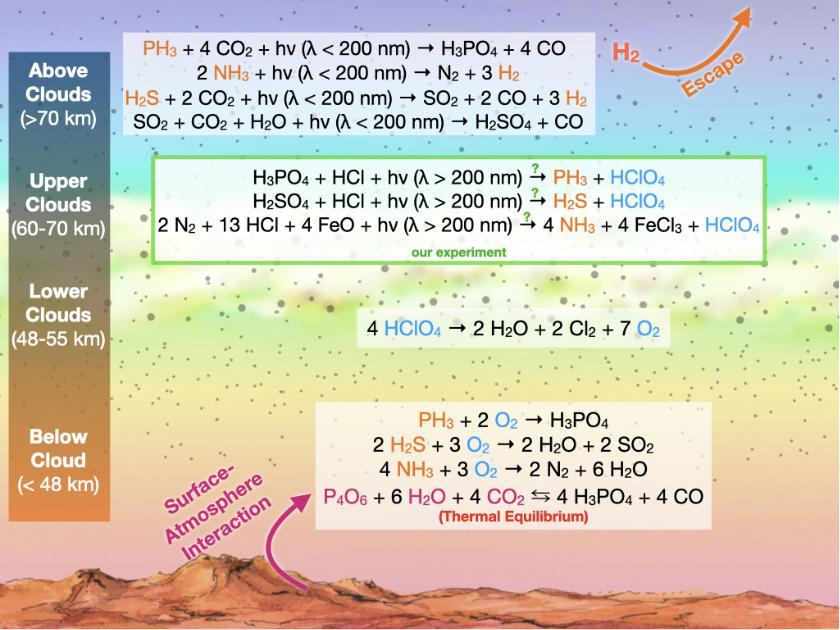Understand the chemistry of the Venusian atmosphere and clouds
Understand the chemistry of the Venusian atmosphere and clouds
We will convert the experimental yields of PH3, NH3, H2S, CH4, and O2 as provided by WP ASH along with the UV intensity of the laboratory light source to UV-dependent effective chemical rates. Based on these rates we are developing a chemical model for the Venusian atmosphere that also accounts for the distributions and properties of the cloud particles as these are essential for the chemistry of the Venusian atmosphere. This full atmospheric model will be built on the atmospheric model of Rimmer et al. (2021), and should be able to predict the concentration of atmospheric species, specifically of the observed and investigated RDPs. Eventually, these concentrations can be compared to previous observations and predictions.
Parallel to these studies, we will expand the thermo-chemical and phase equilibrium code GGchem to include aqueous chemistry and predict the solution of molecular anions and cations in liquid water. This will allow us to investigate the chemistry in the cloud droplets and at the interface between an ocean or a rocky surface and the planetary atmosphere. Using such an updated version of GGchem, we can scrutinize how far redox pairs of certain molecules – those that are often discussed as biosignatures – can already exist in chemical equilibrium under certain circumstances. We will also use this updated code to better characterize the pH value and availability of nutrients in the water droplets as a precondition for the existence of life as we don’t know it, given the conditions on the ground and in the atmosphere.

